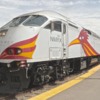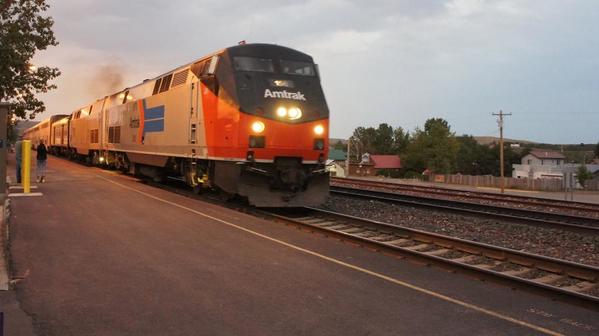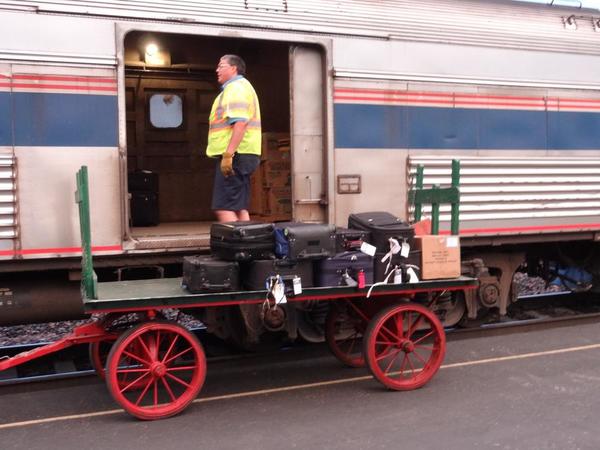In many parts of the world intercity passenger rail is seen as a normal part of everyday life. Unfortunately outside of the Northeast and California that is not really the case. For intercity passenger rail to do well it needs to connect a few densely populated cities and have the speed to compete against driving. I was thinking about this today about how large does a city need to be to support intercity passenger rail? The current city I live in has around 127k people in the city and 256k people in the surrounding county. Less then an hour and a half away is a major city with 853k population and less then two hours away there is a metro area with over 2.9 million people. All three cities have atleast one major University. To drive from one larger city to the other usually takes almost three and a half hours. The city I live in has not had passenger service since the end of the 60's and the cities I mentioned have had their passenger service reduced compared to at the beginning of Amtrak. All cities are located in Florida. I was thinking maybe something like the equivalent of Amtrak's state funded California service would work because it would allow to use most of the current infrastructure. One expensive issue with my city is the only rail line left is a branchline that ends before it reaches downtown. There is a rails to trail that connects downtown and goes out to the mainline that would most likely has to be rebuilt to make the service work.
Replies sorted oldest to newest
Size is kinda irrelevant. Look at the places the Empire Builder and the Zephyr stop in the west and some of those are probably only 30K. But, there is no alternative for them other than driving hundreds of miles to anything. One of the reasons they still exist is because when they talk about discontinuing them their federal politicans, most of whom are Republicans balk. States, etal can go it alone as well as with Amtrak. Neither Caltrain between San Jose and San Fransisco nor ACE between San Jose and Tracy have anything to do with Amtrak. If the people of an area want to put their money (taxes) where their mouth is it is not hard at all.
Another small city passenger service is the Road Runner between Albuquerque and Santa Fe New Mexico. Albuquerque is a relatively small city and Santa Fe is even smaller. I believe that the trains are funded by the state. Both cities, however, have a large tourist business.
NH Joe
Attachments
rdunniii posted:Size is kinda irrelevant. Look at the places the Empire Builder and the Zephyr stop in the west and some of those are probably only 30K. But, there is no alternative for them other than driving hundreds of miles to anything. One of the reasons they still exist is because when they talk about discontinuing them their federal politicans, most of whom are Republicans balk. States, etal can go it alone as well as with Amtrak. Neither Caltrain between San Jose and San Fransisco nor ACE between San Jose and Tracy have anything to do with Amtrak. If the people of an area want to put their money (taxes) where their mouth is it is not hard at all.
http://www.amtrakcalifornia.com
https://www.amtrak.com/national-facts
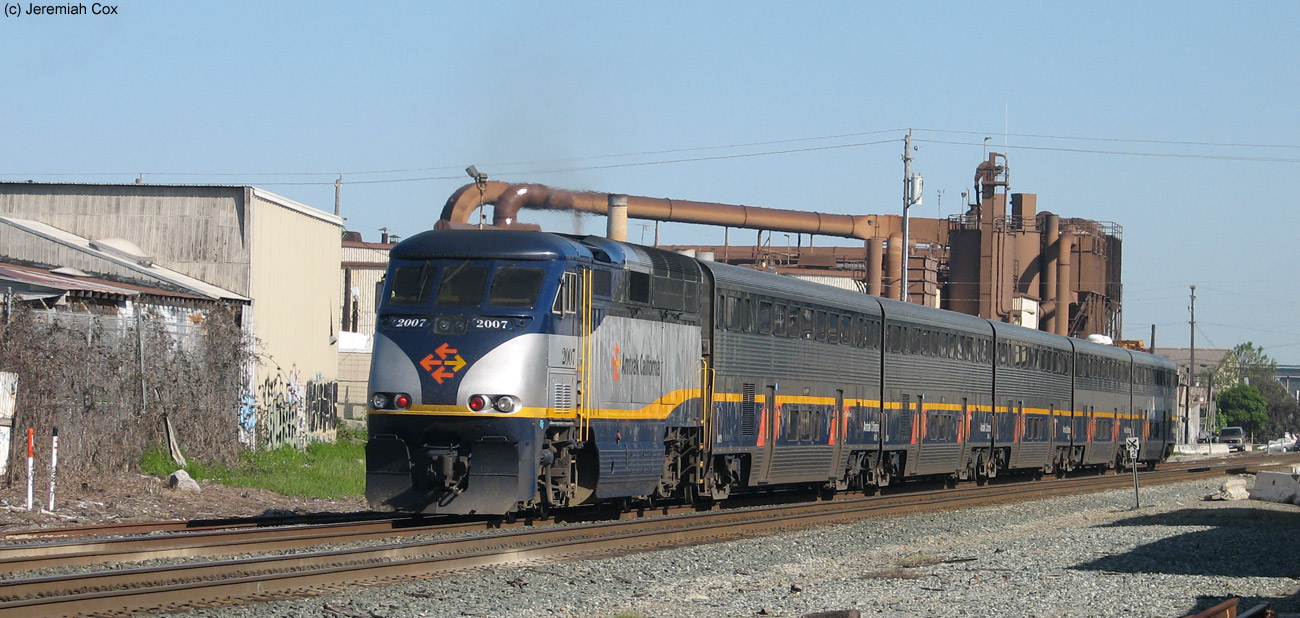
The state of California does subsidize Amtrak's Pacific Surfliner, Capital Corridor, and San Joaquin. All three have more ridership then all of the Amtrak service currently in Florida. I do not think the current long distance service that serves Florida is competitive. I understand the need for Amtrak to serve rural communities but I feel like many of the long distance routes are using resources that could be used for corridor style service like what California has. In the rest of the world intercity passenger rail usually does well if it connects multiple large and medium sized cities and does it in a timely manner.
http://www.fdot.gov/rail/PlanD...r3-PassengerRail.pdf
The current train from Jacksonville to Tampa takes over 5 hours and usually runs late while driving at non peak times usually takes around three and a half hours. It also does not connect to certain medium sized cities like Gainesville, Ocala, and the Villages. In a state with around 20 million people and still growing it does not make much sense why Florida and the federal government have not looked into this more. The main roads through North Florida like I-75 and US301 have become more congested every year. The other issue is CSX does not want to deal with Amtrak and now that the S-line is their primary freight route it makes it even tougher to bring back passenger service on it. If Sun Rail and the state allowed some freight trains to be re-routed through Orlando on the A-line during the day and maybe did some improvements to the S-line that might convince CSX to cooperate.
New Haven Joe posted:
We have something similar in Florida. We have a commuter rail line from Sanford through Orlando called SunRail. I am hoping once the extension to Kissimmee opens it will increase the ridership. I still wish the airport connection was built too. I think SunRail has been beneficial to Central Florida but many other parts of Florida did not really benefit. CSX has made the S line their primary freight route since they sold off part of the A-line through Orlando. That makes it difficult for Amtrak to ever return to that route. I think if the state wants to bring back Amtrak service on that route they might have to allow CSX to route some freight trains during the day down the A-line through Orlando again. As Florida continues to grow and the demand for passenger and freight increases that state might need to work something out with CSX sooner then later.
Fecguy.
The real problem is your state politicians, nimby's, airlines, bus companies to name a few. CSX as well as other RR's don't want the liability of a passenger train if they can prevent it. CSX already has issues with Tri-Rail on their mainly single track lines The FEC is not crazy about it too since many in South Florida want Tri-Rail to run on their lines as well. Amtrak runs because of federal laws enacted when the Freight Railroads wanted to get rid of non-profitable passenger service altogether.
The Northeast has a lot of them because of these established services for over a century. If you want to get a decent system, the state of Florida like California needs to step it up and take the initiative of installing infrastructure, getting rid of many grade crossings, and limiting liabilities to freight RR's that host inter city trains in those congested areas.
prrhorseshoecurve posted:Fecguy.
The real problem is your state politicians, nimby's, airlines, bus companies to name a few. CSX as well as other RR's don't want the liability of a passenger train if they can prevent it. CSX already has issues with Tri-Rail on their mainly single track lines The FEC is not crazy about it too since many in South Florida want Tri-Rail to run on their lines as well. Amtrak runs because of federal laws enacted when the Freight Railroads wanted to get rid of non-profitable passenger service altogether.
The Northeast has a lot of them because of these established services for over a century. If you want to get a decent system, the state of Florida like California needs to step it up and take the initiative of installing infrastructure, getting rid of many grade crossings, and limiting liabilities to freight RR's that host inter city trains in those congested areas.
I saw a study the FDOT did about building a freight route parallel to US27 to serve Miami/South Florida that CSX and the FEC would be able to use. California built the Alameda Corridor which is a 20 mile triple tracked rail line built to the port to speed up freight traffic and reduce congestion. Both the UP and BNSF use this. I know the ports of Miami, West Palm Beach, and Fort Lauderdale are not as busy as Long Beach but having better freight connections is a must to stay competitive to other ports in the US. I kind of wish CSX, FEC, Amtrak, and the state of Florida could develop a transportation plan for the state that would allow for better passenger and freight service. Unfortunately there are a lot of special interest groups and NIMBY's that would fight about it. NIMBY's would be extremely mad if any rails to trails had to be converted back into train lines again. I am hoping Brightline does well but unfortunately it will really only benefit South Florida and Orlando. I think improving infrastructure would be a huge job creator for the state and attract jobs that do not rely on tourism or housing construction. Traffic congestion cost the US 124 billion dollars in 2013 and it is only getting worse. Still though if they do anything I would hope they do it in a cost effective away so the subsidies for passenger service would not be out of control.

Boston (667,000) has a very good system, IMO. Metro area probably 3.5 to 4 million, Eastern Mass.
Our train, Canton to South Station. South Station quickly accesses addition Mass transit.

Pittsburgh, PA, a little smaller, with Allegheny County, 2 million.
Too bad Eisenhower saw the automobile as the future. Our highway system is second to none but Europeans can travel by rail to almost anywhere on the continent in less time than driving.
The idea of expanding rail travel across the US keeps popping up in DC from time to time but American's will never give up their cars.
I live on Long Island so we're lucky I guess. Can go almost anywhere in and around NYC by train/ subway. I have traveled the NE Corridor from Boston to DC, many times and it is pretty good (current Amtrak issues at NY Penn Station not withstanding) .
Done the Auto-train 5 times too.
FECguy posted:In many parts of the world intercity passenger rail is seen as a normal part of everyday life. Unfortunately outside of the Northeast and California that is not really the case.
Ever hear of a city by the name of Chicago?
RSJB18 posted:Too bad Eisenhower saw the automobile as the future. Our highway system is second to none but Europeans can travel by rail to almost anywhere on the continent in less time than driving.
That's because you could place most of that entire "travel zone" within the state of Texas!
The idea of expanding rail travel across the US keeps popping up in DC from time to time but American's will never give up their cars.
Since WWII, the economy of the U.S. was pretty much based around the automobile industry.
I live on Long Island so we're lucky I guess. Can go almost anywhere in and around NYC by train/ subway. I have traveled the NE Corridor from Boston to DC, many times and it is pretty good (current Amtrak issues at NY Penn Station not withstanding) .
Done the Auto-train 5 times too.
I'm a 7 minute walk to our local station. 30 minutes later I'm in the main Philadelphia station. From there, I can take trains leading to points all over the country, or, a 15 minute train ride to the airport. By train, NYC is 1 1/2 hours, DC 2 hours, Boston 5 3/4 hours. The Acela would be a bit faster, but not worth the major extra cost, IMO.
I tend to think the answer lies more in the size of the reigning politicians' shadow and clout (and, maybe, ![]() cojones!) than the size of the city.
cojones!) than the size of the city.
It's sort of analogous to which residential streets are plowed first after the big snowstorm.![]()
Or which state receives authorization to build a bridge or highway to nowhere.![]()
Or which relative's business/union wins the bazillion-dollar contract.![]()
Or which U.S. Post Office serving a population of less than 100 should be closed to avoid another round of postal fee hikes.![]()
Etc., etc., etc..
Or, on a more technical level, application of classical transportation planning formulae, like...
In any case, when considering such choices, as Spock said...."It's only logical!"![]()
...........
So sorry. Couldn't resist. I've heard just enough of the latest 2018 Budget Proposal to justify pouring another glass of wine.....and taking a well-deserved jab at the current herd's bouquet from within the D.C. Beltway Corral.
![]()
Attachments
Point well taken. The state of Vermont has 626,000 residents, There is Amtrak service to a good bit of the state, even the far north. It may have to do with long time senators and the one representative, who have been in Washington for some time. Rail service for the masses, in very rural Vermont. IMO. There is a Vermont-er, (snow train) for all those big city skiers to Killington Mt. and other mid-winter get away spots in Vermont. ![]()
We have made attempts at mass transit, IMO. Another 15 years of filling the highways with additional vehicles will dictate better more efficient transportation as highway grid-lock increases. There is discussion about additional mass transit, Washington DC at present. Those who have driven I 95 in the DC area would kind of get the idea.
Mike CT posted:Those who have driven I 95 in the DC area would kind of get the idea.
I's not so bad at 3 am on a Sunday morning.
Given our extensive highway system, the future for short haul intercity travel is more likely to be robotic vehicles, which are already being used intra-city in a variety of European and American cities. The question in my mind isn't whether intercity trains are going to be a dominant part of our future but whether the robotic vehicles will be automobiles or buses. I'd guess automobiles, as people would generally prefer not to be in the presence of unselected strangers. ![]() Probably will take 10-20 years, but to me (and some economists and engineers) it makes sense since building or updating rail infrastructure is ungodly expensive, and the highways are already there.
Probably will take 10-20 years, but to me (and some economists and engineers) it makes sense since building or updating rail infrastructure is ungodly expensive, and the highways are already there.
Robotics will make traffic jams a thing of the past is the prediction. It will encourage suburban sprawl, perhaps. But large concentrations of petroleum powered internal combustion vehicles are bad for people's health and the environment, and spreading things out until they are phased out completely might be a good thing. Then again, robotic passenger trains are already in use.
One way or the other, coal and oil are on their way out, as are individually controlled vehicles. This revolution in technology also will prevent about 30,000 or so people from getting killed each year in the USA alone, hundreds of thousands being maimed and hundreds of billions of unnecessary health care expenses from being required. So whether its trains or buses or cars, the robotic future will be a bonanza economically and in terms of societal wellbeing.
For example, about 11 children die each week in automobile accidents in this country. That's more than the number who die of leukemia.
The big problems are connections and following the commute pattern. Living in San Bernardino, there's a Metrolink that runs to Downtown Los Angeles (LAUPT), but that is still a couple of miles from the Downtown office where I work sometimes and three miles from my regular office, plus the overall commute actually has a longer time than driving (though it's less of a headache sometimes). The cost has gotten pretty high, though at $25 for a round trip.
They've been pushing mass transit in Southern California for decades, but the key problem is that mass transit doesn't follow the commute pattern at comparable scheduling for intercity, and local connections to where people actually live and work are sketchy. They're a mix of several local transit agencies, which are coordinating better than they used to, but there are still major gaps. That still leaves many commuters with driving as a more time/destination-efficient means of travel despite California's failure to support its highway system (there's been a long-standing war on suburban living in California government circles).
The irony is that in 1960, Alweg (the builders of the original Disneyland monorail) submitted a proposal to build monorails down the medians of Los Angeles County freeways. This was rejected, but was about the only thing I've seen that actually followed the commute pattern. Had that been implemented and integrated with connections within the metro areas it looks like it would have worked toward getting people out of cars. Unfortunately, this was at the same time the last of Pacific Electric was being dismantled and there was political pressure from automotive/bus/fuel/tire interests working against integrated suburban-urban mass transit .
An interesting footnote to this is that two of the old Pacific Electric routes that were resurrected -- Blue Line/Long Beach and Blue Line/Exposition Blvd -- have proven to be pretty successful. The Metro Gold Line parallels an old Los Angeles Railway line out toward Pasadena using the ATSF Pasadena Sub right-of-way and connects to the San Gabriel Valley paralleling the CA-110 and I-210 freeways (again, following a commute pattern) and also seems to be working well.
Joe Hohmann posted:Mike CT posted:Those who have driven I 95 in the DC area would kind of get the idea.
I's not so bad at 3 am on a Sunday morning.
Unless it's during football season and the Skins and Ravens are playing at home.![]()
Landsteiner posted:Given our extensive highway system, the future for short haul intercity travel is more likely to be robotic vehicles, which are already being used intra-city in a variety of European and American cities. The question in my mind isn't whether intercity trains are going to be a dominant part of our future but whether the robotic vehicles will be automobiles or buses. I'd guess automobiles, as people would generally prefer not to be in the presence of unselected strangers.
Probably will take 10-20 years, but to me (and some economists and engineers) it makes sense since building or updating rail infrastructure is ungodly expensive, and the highways are already there.
Robotics will make traffic jams a thing of the past is the prediction. It will encourage suburban sprawl, perhaps. But large concentrations of petroleum powered internal combustion vehicles are bad for people's health and the environment, and spreading things out until they are phased out completely might be a good thing. Then again, robotic passenger trains are already in use.
One way or the other, coal and oil are on their way out, as are individually controlled vehicles. This revolution in technology also will prevent about 30,000 or so people from getting killed each year in the USA alone, hundreds of thousands being maimed and hundreds of billions of unnecessary health care expenses from being required. So whether its trains or buses or cars, the robotic future will be a bonanza economically and in terms of societal wellbeing.
For example, about 11 children die each week in automobile accidents in this country. That's more than the number who die of leukemia.
I totally agree with this assessment. It is too bad that I am probably too old to see this implemented. I just drove 2,500 miles to visit with family and see the sights. I would have much rather looked at the scenery and relaxed in a self driving vehicle than having to pay attention to the road every second of the driving part of the trip. My GPS said I did 46 hours of driving.
AGHRMatt posted:The big problems are connections and following the commute pattern. Living in San Bernardino, there's a Metrolink that runs to Downtown Los Angeles (LAUPT), but that is still a couple of miles from the Downtown office where I work sometimes and three miles from my regular office, plus the overall commute actually has a longer time than driving (though it's less of a headache sometimes). The cost has gotten pretty high, though at $25 for a round trip.
They've been pushing mass transit in Southern California for decades, but the key problem is that mass transit doesn't follow the commute pattern at comparable scheduling for intercity, and local connections to where people actually live and work are sketchy. They're a mix of several local transit agencies, which are coordinating better than they used to, but there are still major gaps. That still leaves many commuters with driving as a more time/destination-efficient means of travel despite California's failure to support its highway system (there's been a long-standing war on suburban living in California government circles).
The irony is that in 1960, Alweg (the builders of the original Disneyland monorail) submitted a proposal to build monorails down the medians of Los Angeles County freeways. This was rejected, but was about the only thing I've seen that actually followed the commute pattern. Had that been implemented and integrated with connections within the metro areas it looks like it would have worked toward getting people out of cars. Unfortunately, this was at the same time the last of Pacific Electric was being dismantled and there was political pressure from automotive/bus/fuel/tire interests working against integrated suburban-urban mass transit .
An interesting footnote to this is that two of the old Pacific Electric routes that were resurrected -- Blue Line/Long Beach and Blue Line/Exposition Blvd -- have proven to be pretty successful. The Metro Gold Line parallels an old Los Angeles Railway line out toward Pasadena using the ATSF Pasadena Sub right-of-way and connects to the San Gabriel Valley paralleling the CA-110 and I-210 freeways (again, following a commute pattern) and also seems to be working well.
The last mile is a big issue with public transportation in America. Cities that grew post WWII especially in the sun belt grew around suburban sprawl. This growth was much different then how it was pre WWII when cities grew around a dense urban core usually near a train station. The density made it possible for streetcars and subways to be useful. With the trend of many young professionals moving back to urban areas it might be the turning point needed to make the case for investing more in public transportation. I agree that it is important to make sure public transportation actually meets peoples commutes needs. The other thing that would help if future development was focused around transit where it was in walking distance from the station. Speed is important for transportation. If it is a lot slower then driving then it will be tough to convince people to use it. For the Amtrak route I was proposing if the train cannot do this route in less then 4.5 hours which would put it with in an hour of driving the route then I do not think it would be viable.
Landsteiner posted:Given our extensive highway system, the future for short haul intercity travel is more likely to be robotic vehicles, which are already being used intra-city in a variety of European and American cities. The question in my mind isn't whether intercity trains are going to be a dominant part of our future but whether the robotic vehicles will be automobiles or buses. I'd guess automobiles, as people would generally prefer not to be in the presence of unselected strangers.
Probably will take 10-20 years, but to me (and some economists and engineers) it makes sense since building or updating rail infrastructure is ungodly expensive, and the highways are already there.
Robotics will make traffic jams a thing of the past is the prediction. It will encourage suburban sprawl, perhaps. But large concentrations of petroleum powered internal combustion vehicles are bad for people's health and the environment, and spreading things out until they are phased out completely might be a good thing. Then again, robotic passenger trains are already in use.
One way or the other, coal and oil are on their way out, as are individually controlled vehicles. This revolution in technology also will prevent about 30,000 or so people from getting killed each year in the USA alone, hundreds of thousands being maimed and hundreds of billions of unnecessary health care expenses from being required. So whether its trains or buses or cars, the robotic future will be a bonanza economically and in terms of societal wellbeing.
For example, about 11 children die each week in automobile accidents in this country. That's more than the number who die of leukemia.
The main issues of automated cars would be modifying our current roads to support them, what energy source will they be powered by, and parking the vehicles while in use. Trains can still carry more people in less space, run off of catenary or third rail without having to worry about battery storage like with electric cars, and it would lead to more dense compact development around it. Much of our highway infrastructure especially in urban areas is at capacity and if the population continues to grow in these areas I do not think automated cars would be an end all solution. I still hope that the US looks into electrifying many major freight routes in US maybe through a private-public partnership with the freight railroads. This would allow cleaner and faster freight service and help Amtrak and local commuter agencies improve their service on these routes. If you have a minute check out Solutionary Rail's website. They have some really good ideas.
http://www.solutionaryrail.org
Mike CT posted:Boston (667,000) has a very good system, IMO. Metro area probably 3.5 to 4 million, Eastern Mass.
Our train, Canton to South Station. South Station quickly accesses addition Mass transit.
Pittsburgh, PA, a little smaller, with Allegheny County, 2 million.
Boston is lucky that it was built fairly dense and a lot of those systems existed before the government took them over. With a lot of the Sun Belt states like Florida, much of the development was built as sprawl which makes it a lot tougher for local public transportation and intercity rail to be feasible. Urban areas like Jacksonville, Orlando, and Tampa have become more urban as of recent so it might become viable.
Self driving vehicles may help with traffic congestion but won't entirely get rid of it. Yes, a lot of issues on the road are caused by bad drivers, but even with automated drivers there will be slowdowns, put too many cars on a road, you get congestion, and that doesn't allow for things like road construction and the like. Trains can still carry a lot more people over the same distance than cars can.
One of the big problems is that when you had a city where people worked (like you do with Chicago or NYC or Boston and the like), mass transit in the city and commuter rail or buses from the surrounding areas made it work. But for example, if you look at Atlanta where my company is located, even if they built commuter rail and buses it would not help much, because travelling within the city requires a car. And they pay a price for it, a bridge was put out of commission on one of the highways that serve it, and it is commuting hell there, worse than usual.
It is worse in suburban areas where many jobs have gone, because the jobs are all over the place and people live all over the place. Planners for years talked about creating 'business villages', where jobs were located in certain areas, and you could establish public transit connecting those to the surrounding areas, but people screamed and yelled it was socialism and that they like the 'freedom' of the car, then complain and moan about traffic and a 10 mile drive takes an hour because of congestion.
In the post war world with the move to the burbs it didn't help that people like Robert Moses, old Mr Concrete head, were totally enamored of the car and hated the automobile and used their influence in many cases to prevent mass transit from being built (the 2nd ave subway despite what people still claim was derailed by Moses), Moses and others refused when building highways to allow for a center median that might be used for commuter rail routes, and often used their influence to steer money from rail to road projects, and that kind of thinking still abounds these days, despite what he now claims, the governor of my own dear state of NJ killed the Arc project primarily because of what he attempted to do, take the federal money for it and use it for roads (his claims of overruns has been debunked, and while he had a point about the ARC tunnels not connecting to Penn Station, people involved in the project were willing to adjust the project so it tied into Penn, maybe at Farley, but the governor basically wouldn't even talk about it).
In the end it is going to come down to if people realize that building new roads or expanding old ones don't work, and come to understand that public transit can make their life easier, and that is the key, not necessarily population.
Just as a trivia question, what is the SMALLEST (by population) municipality served by Amtrak? I'll toss out Thurmond, W.Va.
Kent Loudon posted:Just as a trivia question, what is the SMALLEST (by population) municipality served by Amtrak? I'll toss out Thurmond, W.Va.
By golly, I think you may have won the kewpie doll!....
Wikipedia has these interesting factoids re Thurmond:
"Thurmond is a town in Fayette County, West Virginia, United States, on the New River. The population was five at the 2010 census." Yepper, that's what the ol' website sez....."five"....1-2-3-4-5.![]() Unless, of course it's a misprint, pudgy finger typo, whatever.
Unless, of course it's a misprint, pudgy finger typo, whatever.
and:
"Amtrak, the national passenger rail service, provides service to Thurmond under the Cardinal route. It is the second least used Amtrak station after Sanderson, Texas."
And, as for Sanderson, Wikipedia sez:
"Sanderson is a census-designated place (CDP) in and the county seat of Terrell County, Texas, United States.[3] The population was 837 at the 2010 census."
So, it does my taxpaying heart good to know that our federally subsidized (and highly politicized) rail passenger system sees fit to make a stop at a 'town' of ....drum roll, please!....5 (or so) hardy souls. At least in comparison to the Sanderson folk, 'em Thurmonders must be a-travellin' bunch!l
In fact, the day's big event is the whole town gathering down at the station for the arrival of the Cardinal! (Festus is the designated station agent...he was too busy filing the 36 pages of daily Amtrak paperwork to be in this picture!}...
yeeeeeeeehaw!
![]()
Attachments
Are those 5 residents of Thurmond actually Park Service employees ?
There is an Amtrak station East Glacier (National Park) Montana. Little or no town there, except for Park accommodations.
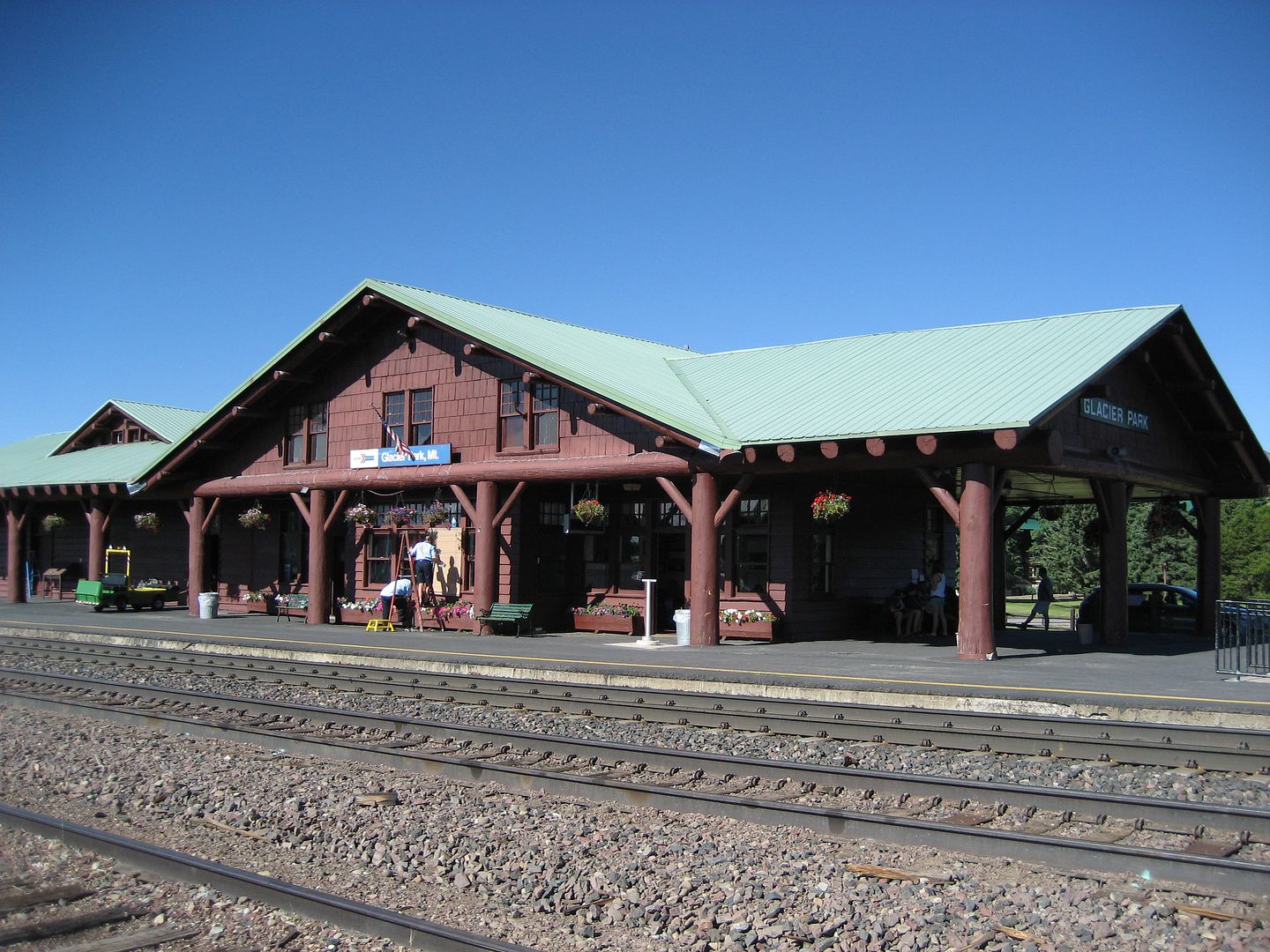

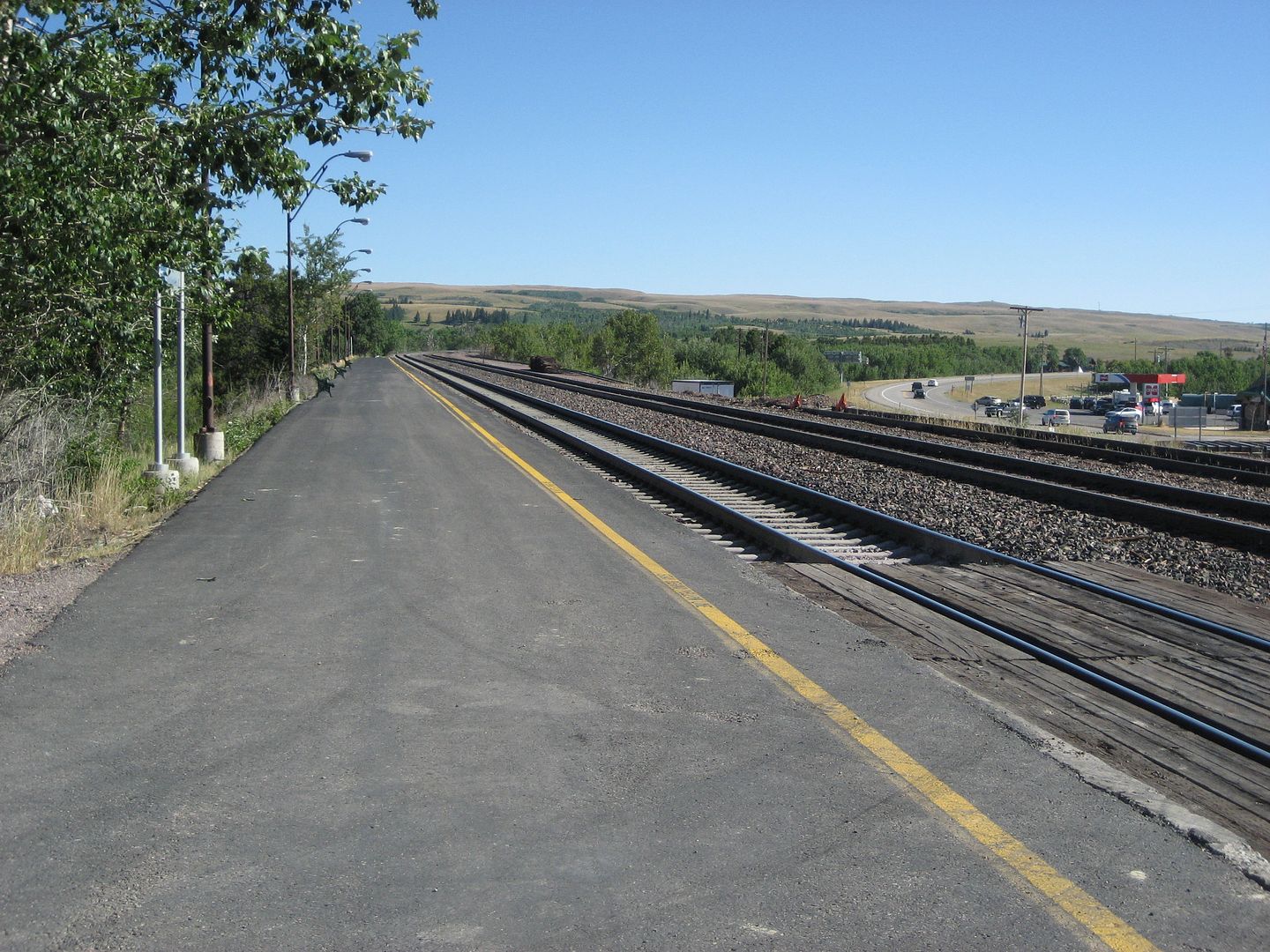
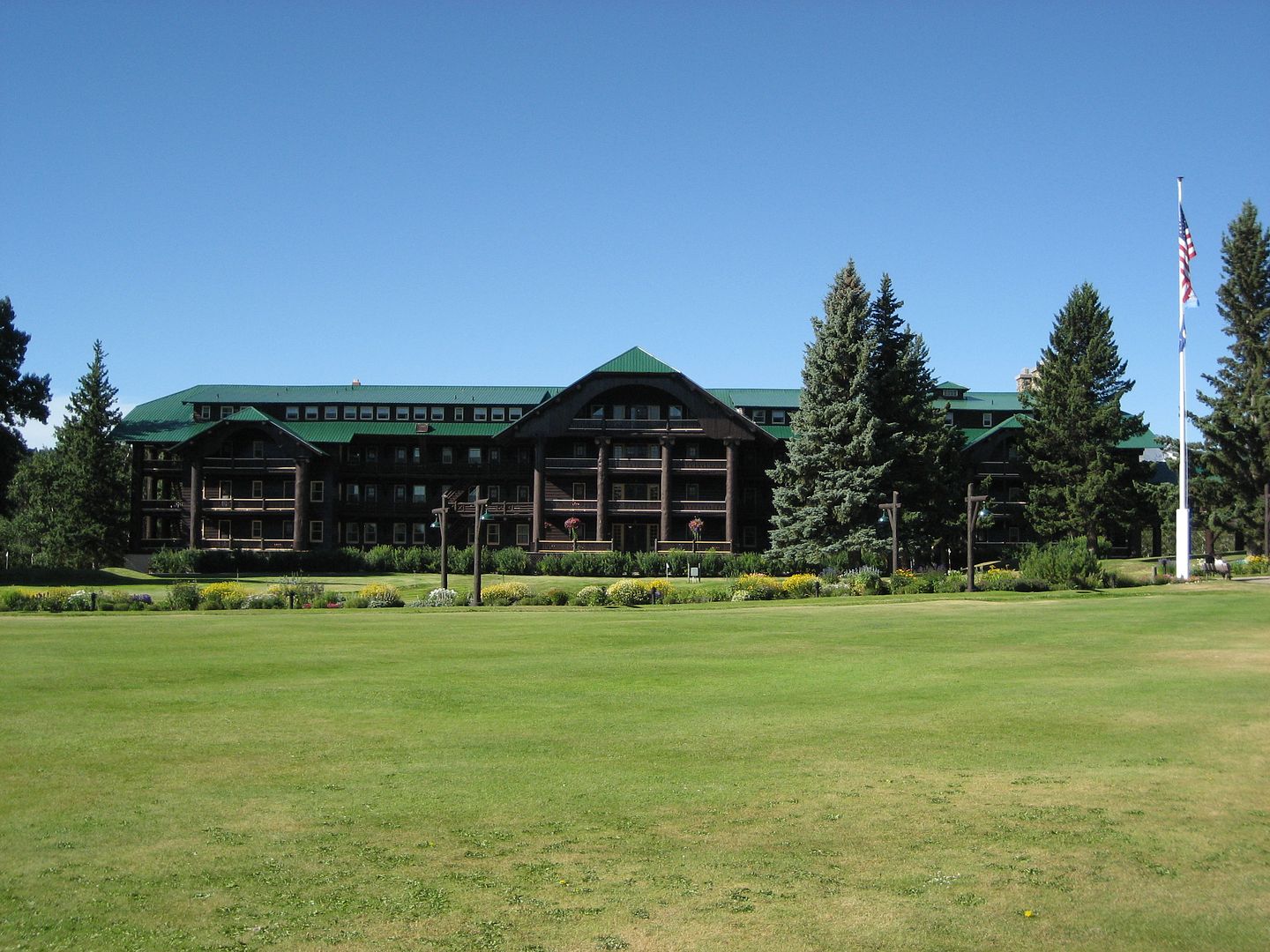

Back to Boston, MA. Their system appears to have three levels of transit. Regional, out of Boston to inter-city hubs, stations, where you can quickly walk to the Inner city transit, pictured on the map. You would also have access to the East Coast rail or Super-regional transportation via Commuter or Super Commuter if you use the Acela transit. Probably takes some time to develop a system that works for a lot of people. Places in Boston, parking can be easily $40/day.

Boston also recently completed "The Big Dig" an interest alteration to the Highway system that saw I 93 tunnel under the city. May be the largest dollar value public project to date. $12 Billion. Partially completed, the I 93 system, above ground, did not appeal to the city, Completed sections of the highway construction were razed as the plan moved underground, even to the airport.






